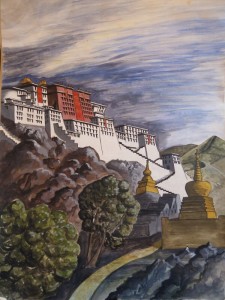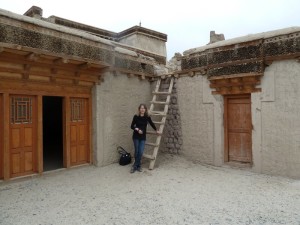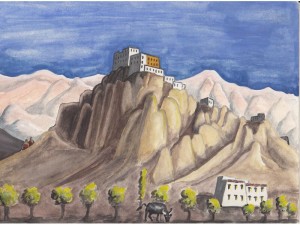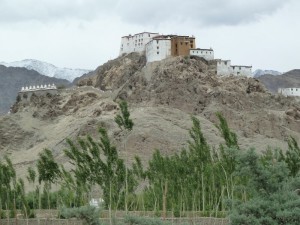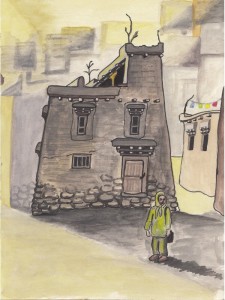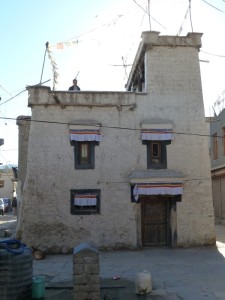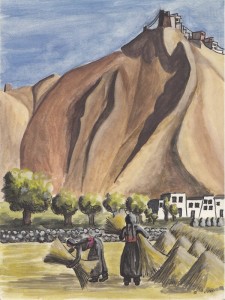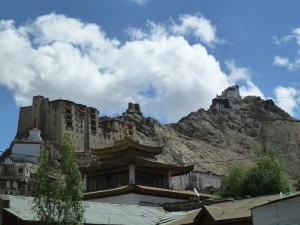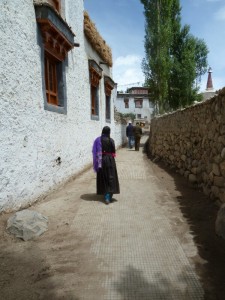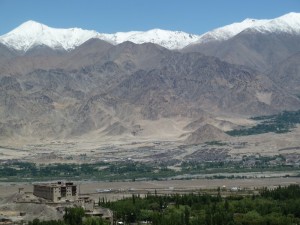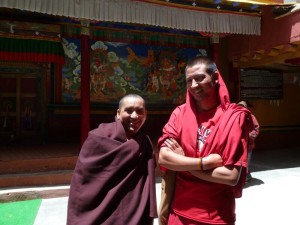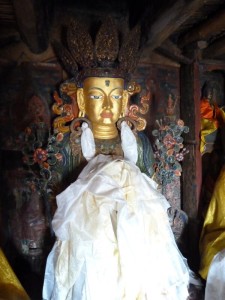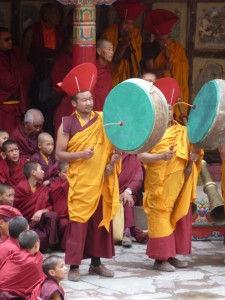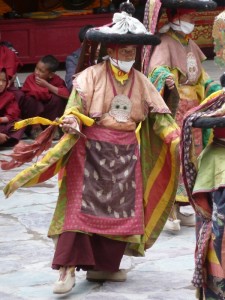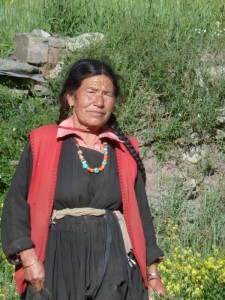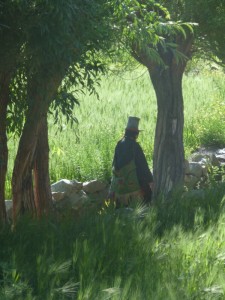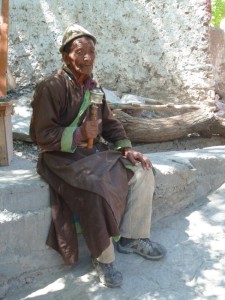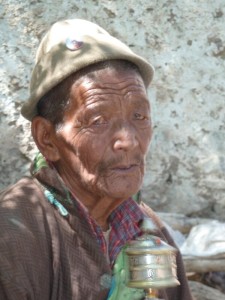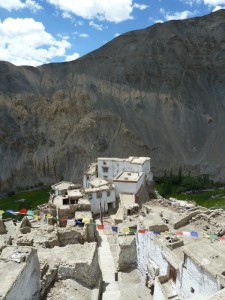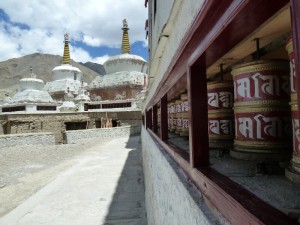Lesley Downer retraces a journey she made 30 years ago to one of the most unspoiled, remote and welcoming corners of the world
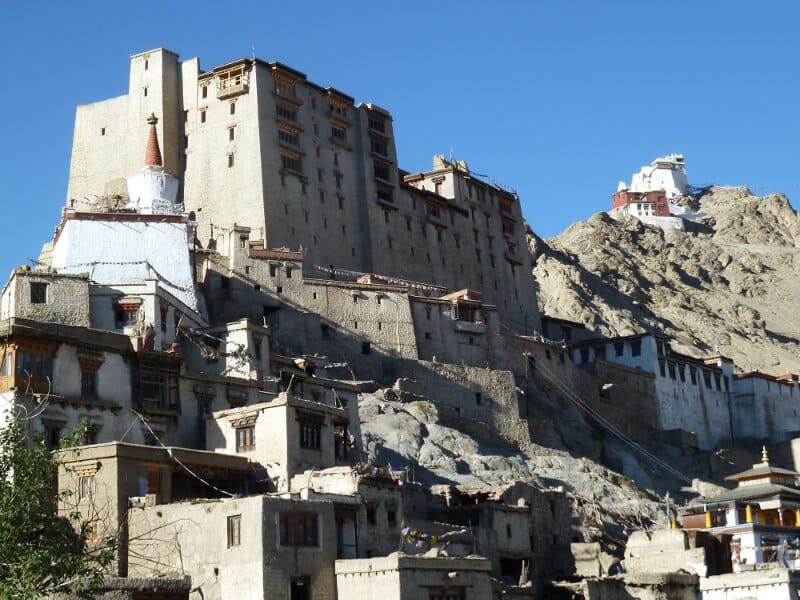
I’m in a small van careering along a rough and narrow road beside a rushing river with brightly painted temples along its banks and craggy peaks towering overhead. We’re traveling in the prescribed Indian fashion — drive as fast as you can and hope for the best or, better still, pray.
One of our group jokes that the driver risks developing RSI (repetitive strain injury) from pressing his horn. Swerving around a hairpin bend directly above a ravine, we overtake at high speed, the wheels skidding along the fatal edge. Rain slicks the road and cloud hangs low in the valleys. I shut my eyes. It’s better not to look.
The road straightens and we fly past a procession of people carrying what looks like a chair, draped in red, with seven ghostly faces like Venetian carnival masks attached in pairs above each other at the front with a lone mask at the top glinting silver in the mist. It’s an eerie sight.
“A local god,” says our leader, Bhupesh, “being carried to the nearby Hadimba Temple.” It’s a bit like a Japanese matsuri (festival), I realize; the chair is the mikoshi (the god’s vehicle).
I’m on my way to Manali and from there to Leh, the capital of Ladakh, on the first leg of what will be, I suspect, the journey of a lifetime. Manali is where the Manali-Leh Highway begins. Even the name sends a shiver of excitement through me.
Ladakh was the crossroads of the ancient trade routes from South Asia, where they came together before heading off for the Silk Road crossing the Asian steppes to the north. Until the end of the 19th century, mule trains laden with gold, silver, shawls, tea, indigo, coral, muslin and spices still made the 60-day journey from the Punjab’s Golden Temple city of Amritsar in northwest India, across 11 mountain passes through Ladakh to Yarkand in China, where they would at last reach the Silk Road’s southern branch.
Most of those mule trains went through Kashmir and across the Zoji-la (la means “pass” in Tibetan and Ladakhi), 3,528 meters above sea level. Only a few took the second, much higher route from Manali.
This is my second visit to Ladakh. In 1981, seven years after this little Buddhist country in the far north of India first opened to tourists, I crossed the Zoji-la riding pillion on a motorbike. The road across the pass was only wide enough for one vehicle, so cars, trucks and buses going one way went across in the morning and vehicles heading the other way had to wait till afternoon. But that didn’t apply to motorbikes. We’d pull off the road when a line of vehicles approached and wait till they’d passed, then continue on our way. […]
Originally published in The Japan Times in September 2013
Click on thumbnails to scroll through the gallery. All photographs and paintings © Lesley Downer.
